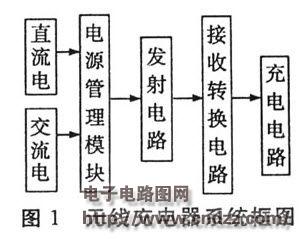description:
At present, portable electronic devices such as mobile phones, MP3s, and notebook computers are mainly charged by a conventional charging method in which one end is connected to an AC power source and the other end is connected to a portable electronic device charging battery. There are a lot of disadvantages in this way. First of all, frequent plugging and unplugging can easily damage the connector. There is also the danger of electric shock. therefore. The contactless inductive charger was born at the end of the last century. With its advantages of easy portability, low cost, and no wiring, it has quickly attracted attention from all walks of life. Therefore, wireless charging is realized, energy transmission efficiency is high, and it is easy to carry one of the research directions of the charging system.

This paper designs a simple and practical wireless energy transfer charger that wirelessly transmits electrical energy to the battery through a coil. Simply charge the battery and receiving device on the charging platform. Experimental proof. Although the system can not be charged invisible. However, it has been possible to place multiple school appliances on the same charging platform while charging. Eliminate the trouble of wiring.
Wireless charger principle and structure
The wireless charging system mainly adopts the principle of electromagnetic induction, and energy transfer through the coil realizes energy transfer. As shown in Figure 1, when the system is working, the input terminal converts the AC mains into a DC power through the full-bridge rectifier circuit, or directly supplies the system with a 24V DC terminal. The DC power output after the power management module is converted into high frequency alternating current by the 2M active crystal oscillator to supply the primary winding. The energy is coupled through two inductor coils, and the current output from the secondary coil is converted into direct current by the conversion circuit to charge the battery.


2 transmitting circuit module
As shown in Figure 3, the main oscillator circuit uses a 2 MHz active crystal oscillator as the oscillator. The square wave of the output of the active crystal oscillator is filtered out by the second-order low-pass filter to obtain a stable sine wave output, which is output to the coil and the capacitor through a class C amplifier circuit composed of a triode 13003 and its peripheral circuits. The parallel resonant circuit radiates out. Provide energy to the receiving part.



The wire diameter of the hollow core coupling coil of the parallel resonant circuit composed of the capacitance is measured as O. 5 mm, 7 cm in diameter, 47 uH in inductance and 2 MHz carrier frequency. According to the parallel resonance formula, the matching capacitance C is about 140 pF. thus. The transmitting portion uses a 2 MHz active crystal oscillator to generate an energy carrier frequency close to the resonant frequency.
Led Module,Module Led,Module Light,Led Module Light
ShenZhen Megagem Tech Co.,Ltd , https://www.megleddisplay.com